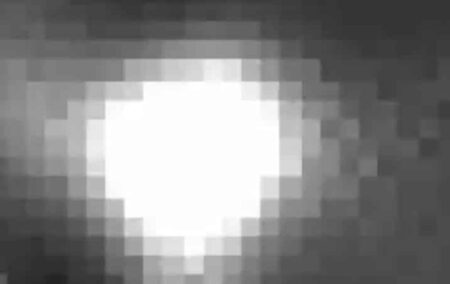An explosion more than 10 times brighter than any recorded exploding star has been detected by astronomers – eight billion light years into space.
BBC science correspondent Pallab Ghosh writes that a flash in the sky was first automatically detected and recorded in 2020 by the Zwicky Transient Facility in California. But it wasn’t until a year later that it was picked up by astronomers combing through the data.
So far, Ghosh notes, it has lasted more than three years, much longer than most supernovae which are usually only visibly bright for a few months.
One theory is that the blast was caused when a vast cloud of gas was swallowed up by a black hole.
Astronomers called the event AT2021lwx. At the time they thought it was unremarkable because there was no indication of how far away it was and therefore it wasn’t possible to calculate its brightness.
However, last year, a team led by Dr Philip Wiseman from the University of Southampton analysed the light from the event which enabled them to calculate its distance – 8bn light years away.
The team was baffled as to what could have caused something so bright. Wiseman said there was nothing in the scientific literature that could account for something that was so bright, and that lasted so long.
According to the BBC, his theory is that the explosion is a result of an enormous cloud of gas, possibly thousands of times larger than the Sun, being swallowed up by a supermassive black hole.
[Image: NASA]

